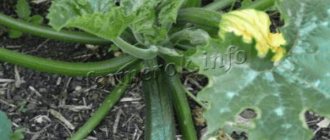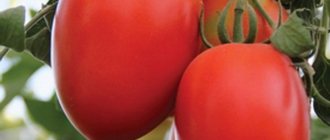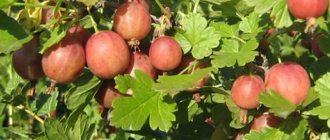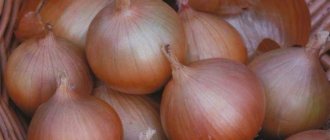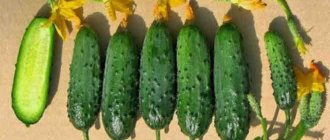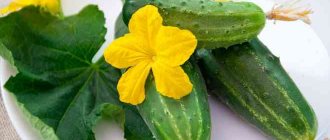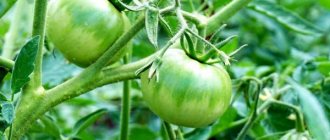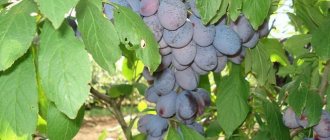Among the varieties with light fruits, Gribovsky zucchini is one of the most popular in Russia and the CIS countries. The strongly branched plant bears fruit well in many regions, without requiring special growing conditions and care. More details about its characteristics and cultivation method can be found below.
Zucchini Gribovsky
Zucchini Gribovsky high-yielding variety
Zucchini Gribovsky has tasty and juicy pulp
Description of the variety
Zucchini Gribovsky 37 was bred in 1943 from a Greek sample of foreign origin. It immediately gained great popularity and is still grown in many cities of the former USSR to this day. Many gardeners will be interested in its characteristics:
| Parameter | Description |
| Ripening period | The variety is grown as an annual crop and has a medium-early ripening period - on average, 45-60 days pass from planting seeds in the ground to harvesting the first fruits. Fruits form on the plant within 35-40 days. |
| Features of the plant | The plant form is bushy with a large number of shoots. The bushes themselves are well developed and formed from strong spreading branches. The main stem is large in size and spreads along the ground. Large spotted leaves of bright green color and pentagonal shape appear on the bushes. They are supported by long powerful petioles. The entire plant is covered with pubescence in the form of thorns. Bright yellow bell-shaped flowers appear on it. The variety is dioecious, so there are male and female flowers. Unlike female flowers, male flowers lack a thickening on the peduncle. Pollination occurs with the help of insects. |
| Features of the fruit | The fruits of the Gribovsky zucchini can be described according to several main parameters:
|
| Disease resistance | The variety is not afraid of a number of diseases that pose a danger to other members of the Pumpkin family. These include bacteriosis, fruit rot and powdery mildew. In this regard, the crop does not need to be treated with chemicals. |
| Productivity | Gribovsky zucchini is a high-yielding variety - subject to proper agricultural technology, it allows from 1 sq. m of bed to collect from 4 to 8 kg of fruit. |
Beneficial properties of zucchini pulp
It is no coincidence that Gribovsky-37 zucchini is known as a food product in foreign countries. Moreover, young fruits are eaten. They contain a lot of water and fiber, and small amounts of proteins, sugars, and fats. This combination makes zucchini low in calories. In addition, it is well absorbed. Therefore, after processing it is used in children's and dietary nutrition.
Zucchini is also rich in other useful components:
- potassium and magnesium are needed for cardiovascular diseases,
- iron is beneficial for blood composition,
- dietary fiber absorbs toxins and salts, so zucchini is recommended as a dietary product after poisoning,
- light sugars (monosaccharides) allow it to be used by people with diabetes,
- vitamins and antioxidants protect the immune system and the aging process proceeds more slowly. Therefore, it is advisable to use them in food, especially in diet. Can be cooked separately or together with different vegetables.
You can prepare a wide variety of dishes from zucchini: for every taste and ability. This is an excellent dietary product.
Dates and methods of planting
There are two ways to grow Gribovsky zucchini in your garden plot:
- Through direct sowing into the ground . A good choice for regions with a warm and stable climate. It is advisable to sow seeds in the ground at the end of May or beginning of June, when the threat of severe frost has passed. In the south, sowing work can be done in early May, but always under film cover.
- Seedlings . In the central and northern regions, it is better to cultivate the vegetable through seedlings. To get an early fruit harvest, you should sow seeds in pots from the last ten days of April to mid-May. If you plan to put the fruits into long-term storage and prepare preparations for the winter, it is better to carry out sowing work in the last ten days of May. After about a month, the seedlings in the phase of 2-4 true leaves can be transplanted to a permanent location.
Growing zucchini in a greenhouse
To get an early harvest of zucchini, they should be planted in a greenhouse.
- The soil for plants needs to be well fed. To do this, make a 30x30 cm trench in the greenhouse around the perimeter of the zucchini bed, into which fertilizer is placed.
- Plant zucchini in a checkerboard pattern. A distance of 50 cm is left between plants, and 70 cm between rows.
- Do not allow the zucchini to overheat. To prevent temperature increases, the greenhouse is periodically ventilated.
- The best temperature for ripening zucchini Gribovskikh 37 is 26 degrees. The minimum value is 15 degrees.
- When the weather gets hot enough outside, it is recommended to leave the greenhouse open.
Watering is done at the root. One young plant requires 1 liter of water; adult zucchini will require 2 liters. Watering is carried out in two steps. Plants are moistened infrequently, but abundantly.
Site selection and bed preparation
The culture is photophilous, so it needs to be grown in a sunny place protected from drafts. The best option is southern and southwestern slopes. As for the soil, it should be nutritious, sandy loam or medium loam with neutral acidity.
It is undesirable to grow zucchini on heavy soils near which groundwater flows.
When choosing a site, it is equally important to take into account the rules of crop rotation. Zucchini cannot be planted in a place where the following were previously grown:
- cucumbers;
- squash;
- watermelons;
- other representatives of the Pumpkin family.
Its good predecessors are:
- green manure crops;
- onion;
- cabbage;
- carrot;
- peas.
To protect zucchini from pests in the future, it should be planted near the following crops:
- garlic;
- Luke;
- marigolds;
- basilica;
- peppermint.
Having identified a suitable area, you can begin preparing it. It is advisable to dig up the bed in the fall using a spade, add organic fertilizers (humus, compost, peat, sand) and cover it with dark material for quick warming. If you want to reduce the acidity of the soil, you need to add lime to it.
During autumn preparation, the bed can be watered with a solution of the biological fungicide Fitosporin-M (1 tablespoon of powder per bucket of water to treat 1 sq. m of bed). This product will destroy fungal and bacterial pathogens.
Tillage can also be done before sowing. To do this, it needs to be dug up well, and then fertilized with mineral and organic substances.
Pests and diseases
The “health” of Gribovsky’s zucchini is strong. Diseases rarely plague this variety. The situation with insect pests is different. Spider mites, sprout flies, and melon aphids are insects from which zucchini must be protected.
Spider mites appear on the site in the second half of June. Lives on the underside of leaves, feeding on their juice. They provoke the fall of ovaries, leaves, and flowers. Plants are sprayed with an infusion of hot pepper and wood ash.
The sprout fly overwinters in the soil. Wakes up in early May. Damages seeds and sprouts and stems. To combat fly larvae, Fufanon or Karbofos is added to the soil in early spring.
Is it possible to trim the lower leaves of zucchini in open ground and is it necessary to do so? Read
The melon aphid settles on weeds in the spring. Then the emerging colonies of insects attack the zucchini, the back of the leaves, and young shoots. Leaves become deformed, fall off, and plant growth stops. The plantings are treated with karbofos, powdered sulfur, tobacco infusion, and yarrow.
Prevention of diseases and pests of Gribovsky zucchini will be:
- Pre-sowing treatment of seed material.
- Preparing the soil in the fall - water the beds with a solution of Fitosporin-M. Biofungicidal agent, destroys fungal and bacterial pathogens. To treat one square meter, a tablespoon of powder is dissolved in a bucket of water.
- Deep digging of beds after harvest.
- Weeding and removing diseased plants.
- Maintaining crop rotation.
- Planting plants that repel pests - marigolds, garlic, onions, basil, peppermint.
Seed treatment
With any planting method, Gribovsky seeds must be subjected to pre-sowing treatment, which involves performing the following actions:
- Disinfect seed material. To do this, soak it for 30 minutes in a bright pink solution of potassium permanganate. Hollow specimens that float to the surface of the water should be discarded - they will not sprout. Rinse the remaining seeds with clean water to rid their surface of germs.
- Soak the seeds in 1 tsp for 12 hours. in a growth stimulator - Zircon, Heteroauxin or Epine.
- Soak a cloth bag in water, and then put the seeds in it. Place the bag on a saucer and keep in a warm place for 72 hours. Make sure that the fabric does not dry out.
Germinated seed can be sown in open ground or for seedlings.
Planting through seedlings
This method involves growing strong seedlings, which can be divided into several stages:
- Sowing seeds . Produced in separate containers up to 100 ml to prevent damage to young roots. For these purposes, it is best to use plastic cups, ceramic pots, mini-greenhouses or peat pots. They need to be filled with a ready-made soil mixture with fertile and loose soil. You can add a little superphosphate or wood ash to the substrate. Hatched seeds should be planted in this soil, deepening them to 4-5 cm.
- Creating an optimal microclimate . After sowing, the soil must be moistened and covered with film or glass. When the first shoots appear, the shelter can be removed. It is better to keep the seedlings on a windowsill on the south side, but they need to be shaded from direct sunlight.
- Top dressing. It is enough to feed the seedlings twice, adhering to the following scheme:
- with the appearance of the first sprouts, pour in a solution of 0.5 tbsp. l. superphosphate and the same amount of urea per 1 liter of water;
- 10-14 days after the first feeding, water the seedlings with a solution of wood ash or nitrophoska.
- Watering . To prevent crusts from appearing on the ground, water the seedlings with settled water at room temperature 2 times a week. You should not overdo it with watering, since Gribovsky zucchini is a drought-resistant plant.
- Hardening . It is carried out a week before transplanting seedlings outside to prepare them for new growing conditions. On the first day, the young animals need to be taken out into the open air for 2-3 hours, and on subsequent days, 2 hours should be added to the available time.
After frost has passed, seedlings with a few true leaves can be transplanted into open ground. Planting pattern - 70x70 cm. The seedlings must first be carefully removed from the container so as not to disturb the earthen ball and not injure the roots, and then planted in prepared holes, deepening to the cotyledon leaves.
To extend the fruiting period of zucchini, you can use the conveyor method - planting seedlings several times a season with an interval of 7 days.
How to grow zucchini on your own plot
Zucchini is a heat-loving crop. Therefore, most gardeners begin the season by growing seedlings. The timing of sowing seeds in the middle zone depends on what kind of harvest the gardener wants to get. To obtain early zucchini, seeds are sown for seedlings in late April - early May. If the fruits are planned to be stored for a long time and harvested for the winter, the deadline is shifted to the second half of May.
Dracaena Janet Craig: description and photo, home care
To obtain strong plants, you need to consider the following recommendations:
- Prepare containers with a volume of 100 ml or more, a height of about 10 cm. It is best to use peat pots for the zucchini, but other individual cups will also work.
- Regarding soil, special mixtures are preferred. The soil for plants should be nutritious and loose.
- Before planting, zucchini seeds are soaked.
- Germinated seeds are placed in the soil to a depth of 5 cm.
- 7 days after germination, plants require fertilizing. To do this, take half a tablespoon of urea and superphosphate per liter of warm water. The ready-made product “Bud” is also suitable for zucchini.
- After another 10 days, fertilizing is repeated. For zucchini, use a nitrophoska solution enriched with wood ash.
To avoid rotting of the roots, water the plants twice a week. Take warm water (22 degrees), for each sprout there should be half a glass of water.
Sowing seeds in open ground
Hatched seeds can be sown in open ground according to a 60x60 cm pattern. Planting should not be allowed to be too dense, otherwise in the future the bushes will interfere with each other and will not be able to develop to their full potential. Optimal density – 3 seedlings per 1 sq. m beds.
When sowing, each hole needs to be moistened, if desired, add a handful of humus and ash, and then throw 2-3 grains into it and sprinkle with earth. Zucchini loves warmth, so until the first shoots appear, the planting should be kept under a film cover.
If several seeds sprout in any hole, the weak sprouts must be removed, leaving one strong specimen at a time.
Six rules of care
Caring for the Gribovsky variety is no different from caring for other varieties.
For a good and healthy harvest you need:
- Weed.
- Inter-row loosening . Loosening the bush is done very carefully, since the root system of the zucchini is superficial and vulnerable.
- Thinning when sowing seeds in open ground.
- Regular harvesting . When the fruits outgrow, the bush becomes depleted, its development slows down and the formation of ovaries stops.
- Productivity depends on pollinating insects. To attract, you need to treat the flowers with a solution of sugar, boric acid and water or place a plate with a honey solution on the garden bed.
- During the entire growing season, the plant needs feeding .
During the entire growing season, zucchini needs fertilizing.
Caring for zucchini Gribovsky
This variety is not particularly whimsical, but requires timely implementation of a number of agrotechnical measures. It includes:
- Soil treatment . After the appearance of the first shoots or 7 days after planting the seedlings in the ground, the first loosening can be carried out. It should be light and superficial so as not to damage the root system of the plant. A few hours after loosening, you need to carry out weeding - remove all the weeds in order to preserve nutrients for the zucchini in the soil and prevent the development of diseases. When the seedlings become stronger, it is worth hilling up, which will contribute to the formation of additional shoots.
- Watering .
Several times a week, early in the morning or evening, the planting should be moistened with warm, settled water to prevent the soil from drying out. During the period of flowering and fruit set, the frequency of watering can be increased, but excess moisture should not be allowed - this can lead to root rot. In addition, the top of the fruit will begin to rot in damp soil. In this case, the affected area must be cut to fresh pulp using a sharp knife, and the cut area should be kept over an open fire. After such manipulations, the cut will harden and become crusty, and the fruit will continue to grow. - Feeding . If zucchini is cultivated on depleted soil, then it needs to be fertilized with organic matter and mineral fertilizers. During the period of growth and development, the plant can be fed twice according to this scheme: water the monthly planting with a solution of 40 g of superphosphate, 20 g of ammonium nitrate and 20 g of potassium salts per bucket of water (this composition is enough to water 10 plants);
- 7-10 days after the first feeding, apply organic fertilizer diluted in water under the roots - bird droppings (1:15) or mullein (1:10).
How to care for the variety?
We recommend reading our other articles
- How to make feed for rabbits
- Amur grape variety
- In what cases can you go nowhere without a chainsaw: situations on the farm and on the farm
- Description of the eggplant variety Black Beauty
Caring for zucchini Gribovsky 37 is very simple, but generally forget that the crop cannot be grown in the garden. They need care, just not to the same extent as tomatoes, for example.
- Watering is carried out very rarely, usually if the drought lasts for a long time.
On normal (not very hot) summer days, 1-2 waterings per week will be sufficient. But you should make sure that the soil does not dry out too much, because the amount of water needed also depends on the type of soil. To prevent the plant from taking over the entire area, its growth must be controlled. - About once a week it is worth loosening the soil between the rows so that air can penetrate into the lower layers of soil and nourish the roots of the plants. All weeds are removed from the site during loosening.
- To prevent the plant from taking over the entire area, its growth must be controlled. Usually the lashes are simply pinched if they are not going where they need to be.
- If fertilizing is applied, it is only on poor soils. They will also not interfere if the Gribovsky 37 zucchini has slowed down or completely stopped its growth. From folk, organic substances, ash, yeast solution, and herbal infusion are suitable. Among the specialized substances you can use: “Bud”, “Biohumus”, “Agromix”, “Rossa”, “Effecton”. Minerals can also be used: nitrophoska, potassium nitrate, urea, superphosphate, manganese sulfate, boric acid.
Harvest and storage
On average, harvesting can be done every 2-3 days already in mid-summer. The fruits must be cut from the bushes with a sharp knife along with the stalk. The exact timing of their collection depends on the gardener’s goals:
- Eat zucchini in the coming days . During the fruiting period, you need to remove young fruits with light and soft skin, which will also stimulate the formation of new ovaries. As a rule, 8-12 days pass from the formation of ovaries to the outgrowth of fruits. In order to have time to collect young zucchini, the plantings need to be inspected every 3-4 days.
- Place for winter storage . If zucchini is grown for long-term storage, the fruits should be picked only when the varietal maximum size is reached. The skin of such vegetables is rougher, so they can be preserved until February-March. Cut fruits without visible damage should be dried in the sun, wiped with a dry cloth (do not wash!) and stored in the basement, having previously been placed in boxes. To prevent the zucchini from touching each other, you need to place straw or sawdust between them.
Zucchini can be stored after freezing. To do this, they need to be thoroughly washed, peeled and seeds removed, and then cut into small pieces, packaged in bags and put in the freezer.
Even if the vegetable is stored, it should not be allowed to overripe, since this will cause it to become covered with a rough bark of a yellowish or brown tint, and will also lose its taste - there will be more seeds inside than pulp.
Features of the cultivation of this variety
The soil needs to be dug up in the fall, as well as preparatory measures. We add the components necessary to ensure that the soil is fertile and loose. Planting is carried out in open ground, adding a handful of ash and humus to the recess.
Place the seeds so that there are 3 seedlings per 1 m2. If you plant them in the southern regions, then you need to put three seeds in each hole, subsequently leaving a stronger plant.
Seedlings must be planted when there is no frost. If you want to receive vegetables ahead of schedule, then the conveyor method is used. Seedlings are planted gradually a couple of times a year with an interval of a week.
6 rules for caring for zucchini
Caring for zucchini is simple and consists of standard measures:
Weeding that is not done very often
After all, the large leaves of the plant cover the ground and prevent weeds from growing. Loosening between rows: done carefully, the root system is very vulnerable. Cutting through seedlings when sowing seeds. Vegetables must be harvested at the technical ripeness stage all the time. Overgrowth of fruits is not encouraged, they become inedible
Moreover, new fruits develop more slowly. Attracting pollinating insects, on which the fertility of zucchini depends. One of the technologies is to treat the flowers with sugar and boric acid per liter of water at the time of flowering. Another technology is to place small bowls with honey solution nearby. Vegetables need to be fed throughout the growing season.
If other melons and melons are located nearby, the plants can be cross-pollinated. Their seeds should not be used in the future.
Pests and diseases of zucchini Gribovsky
Damage to this variety of zucchini is caused by the most popular insects that like to appear in the garden plot. They can plant on different crops. Therefore, measures must be taken as soon as the first signs of their appearance become visible.
- Spider mites cause damage to many crops. Lives on the lower surface of the leaf blade, entangling it with a web. Absorbs cell sap. At first, small dots are visible on the leaves, which gradually expand. The leaf dries up, the flowers fall off, and the fruit sprouts too.
- Melon aphid: It affects approximately 47 varieties of crops. First the pest visits weeds, then cultivated plants. Groups of aphids are extensive. They live on young shoots, flowers, leaves. Their main habitat is the lower part of the leaf. The growth of the vegetable is dulled: the leaves curl, the flowers fall off. If you do nothing, the plant will die. In July-August, aphids appear on zucchini.
- Whitefly: an omnivorous pest, the number of which increases many times in the second ten days of summer. Settling on the lower part of the leaf, the whitefly forms sugary components favorable for the proliferation of sooty fungi. The leaves wither and turn dirty black.
- Sprout fly. It appears in early spring and lays eggs under the earthen bark. The larvae injure the tender sprouts of the vegetable, making holes in the stem. The sprout withers and dies. During a season, a fly produces several generations.
This variety of zucchini is resistant to diseases. But there are diseases that affect him most often.
- Anthracnose is a fungus that affects vegetables at different stages. Round, blurry spots appear on the leaves. There is a feeling of a burnt leaf. Weeping spots form on the stems. The fruits become shriveled and rot. The fertility of the crop decreases.
- Powdery mildew is a fungal infection that develops well in humid weather, also when dew forms. The disease affects leaves and stems on which white spots appear. A white coating appears on the leaf. When the stems are affected, the fruits ripen prematurely. They are unripe and without much taste.
- Gray rot - most often appears in greenhouses. Flowers, sprouts and peduncles are sick. A gray coating with a sliding surface appears on them. Pollinating insects carry the disease from bush to bush. Diseased crops sharply reduce fertility.
- Downy mildew or downy mildew. Yellow, oily spots appear on the leaf blade. After some time they turn brown. The spots join together and the leaf dries out. Gradually only the stems remain green. The disease blunts the development of the vegetable and causes its death.
Before using chemicals, you need to take preventive measures against pests and diseases:
- Maintain crop rotation and combine cultivated plants in the garden.
- Remove and dispose of plant debris and infected parts of plants.
- Carry out winter digging of the site.
- Treat several times with 1% Bordeaux solution or 0.3% copper oxychloride.
Advantages and disadvantages
The advantages of the Gribovsky variety include the following qualities:
- is resistant to diseases;
- withstands sudden changes in temperature;
- has high taste qualities;
- refers to high-yielding plants;
- suitable for long-term storage and transportation to distant plants, so it can be grown for further sale.
The only disadvantage of the variety can be noted that its bushes are vigorous. Because of this, you will have to allocate a large area in the garden bed for the vegetable.
Reviews about the variety
★★★★★
Larisa Pavlovna, 56 years old. Along with zucchini squash, I also grow the variety Gribovsky 37. I like its germination and productivity, and the young fruits are very tasty and juicy.
If we don’t have time as a family to eat all the fruits, then I use them to prepare winter preparations – caviar or marinades. It turns out very tasty. ★★★★★
Ivan Sergeevich, 49 years old. For me, Gribovsky zucchini is a classic.
My parents also raised it. The fruits are white in color and have a pleasant density and no noticeable fibrousness. Fried zucchini is the most delicious! I grow some of the fruits to a rough crust and put them in the cellar for storage. They do not lose their qualities until spring. ★★★★★
Olga Syshchuk, 39 years old. At the dacha I grow zucchini Gribovsky 37. I choose this variety for its unpretentiousness, good germination and productivity.
But keep in mind that the bushes are very branchy, so they will take up a lot of space. It's not a problem for me. Zucchini can be harvested 45-50 days after the first shoots appear. The skin is not hard, and the flesh is very tender and juicy. I recommend to everyone. Hide
Add your review
Zucchini Gribovsky 37 is cultivated in their garden plots by both beginning gardeners and experienced gardeners. The variety is valued for its unpretentiousness, resistance to diseases and low temperatures, as well as good germination and productivity. Most of the fruits can be collected at a young age for consumption, and the remainder can be harvested when ripe for storage.
0
0
Copy link
What advantages and disadvantages does the variety have?
Also check out these articles
- Pepper Bogatyr
- Carrot Canada F1 - description and characteristics of the variety
- How to water an orchid
- Goat farming as a business
Zucchini Gribovsky 37 has a lot of positive qualities.
- Productivity up to 500 c/ha on an industrial scale. In a private garden, up to 7 kg of fruits are usually harvested per square meter.
- Resistant to severe cold snaps and recurrent frosts. Even with unexpected frosts, the variety survives and bears fruit in the summer.
- Resistant to most diseases that can affect zucchini. Plants tolerate pests without difficulty.
- The harvest is stored for a long time, under proper conditions it can last until spring, although the taste deteriorates with age of the fruit.
- The fruits are marketable and can often be found on market and store shelves.
- It is grown throughout Russia, Ukraine and neighboring countries. Almost any climate is suitable for the variety. And if there are too early cold snaps or heavy rains, it is worth growing it in a greenhouse, where it even produces larger yields.
The main disadvantage of zucchini variety Gribovsky 37 is its branchiness. It takes up a lot of space on the site. Not only bush zucchini, but even some branched ones are much more profitable to plant in terms of saving space. It is also worth considering that today there are a lot of new varieties of zucchini, better in terms of yield, with earlier ripening dates, which has reduced the popularity of the species.

